Postmodern Literature From The Late 20th Century Onwards: A Top 10

What is Postmodern Literature?
Well, that's a loaded question. I am going to do my best to break it down for you. Now, while postmodern literature can be hard to nail down as a concept, it should first be said that there are a few major similarities between major works which are considered postmodern.
Postmodern literature is generally understood to be literature which rejects absolute meaning, both ideologically and stylistically. The novel often takes a political view through historical occurrences, and instead focuses heavily on the absurd, paradox, dark humor, parody, satire, paranoia, metafiction and self-reference to the author.
On one hand, postmodern literature is everything that modern literature is not. Whatever was conventional has now been flipped on its head, examined for use, and then ridiculed in ironic and realistic ways.
When classifying a novel or work of literature as postmodern, one must consider a few basic tenets:
1. The work is largely experimental; it stands out as a unique story all on its own. The postmodern novel defies categorization. It refuses to be placed in a box by blending multiple genres. A famous example would be Kurt Vonnegut's Slaughterhouse-Five in which genre is eschewed and both science fiction and historical fiction are blended to give the novel more meaning.
2. The narrator is unreliable. That is to say that the story is conveyed to the reader may include natural embellishments or outright inaccuracies. In Vladimir Nabokov's Lolita, the narrator and main character Humbert Humbert mentions his mental distress and his many admissions into sanitariums, forcing the reader to question the veracity of his narration.
3. The story contains self-reflexivity, an innate desire to refer to the story inside the story. Many postmodern works have fictional artists completing fictional works, which themselves comment on the book you are currently reading. In David Foster Wallace's Infinite Jest, about 20 pages of endnotes are dedicated to a fictional filmmaker’s filmography.
4. Elements of intertextuality pervade the prose, showing clear influence from previous notable literary works. The novel wears its heart on its sleeve in terms of where it took inspiration from. In Don DeLillo’s Underworld, special attention is paid to the finding of a legendary baseball, in a very similar way that Infinite Jest explores the quest to find the master copy of “the entertainment”.
5. Historical and political issues are used as a backdrop or possible theme for the story. While not every postmodern piece of literature takes this form outright, it is hard for fiction of this stripe to avoid historical references altogether. In Jonathan Franzen’s The Corrections, the economic boom time of the dot-com era exists as a backdrop to the story’s events while informing our characters’ decisions.
6. The novel features insight into main characters who are disenfranchised or typically left out of popular literature. This scope into the people who aren't usually represented in literature brings those very people to center stage. In Matt Ruff’s Lovecraft Country, we are given the viewpoint of African-Americans in postwar America which allows us to deeply view the terrible consequences of segregation.
7. A down-to-earth approach is used. Daily happenings such as bodily functions, depression, drug use, and sexual activity are heavily referenced throughout the work. In Thomas Pynchon’s Gravity’s Rainbow, a military officer engages in a lewd sexual act with a female spy and it is described in graphic detail meant to shock the reader.
8. The piece uses metafiction extensively. This is a form of fiction that constantly reminds the reader that they are reading a work that was constructed for the purpose of consumption. This ties in closely with self-reference and self-reflexivity. Books featuring this method will find a way to provoke the reader to think about the construction of the book. This, in turn, will force the reader to examine the characters and story arcs in a new light at every turn. In William Gaddis’ The Recognitions, a book critic speaks about how annoying it was to review a thousand-page book he never read. Gaddis's novel is itself around 1,000 pages and was reviewed negatively by men who never read the book.
9. There is a deep focus on events or images which are absurd or uncanny. The inclusion of these strange instances forces the reader to question the veracity of the claims being made by the narrator or author. In David Foster Wallace’s The Pale King, the characters live in a world of absurd and ridiculous boredom, which itself speaks on our modern world.
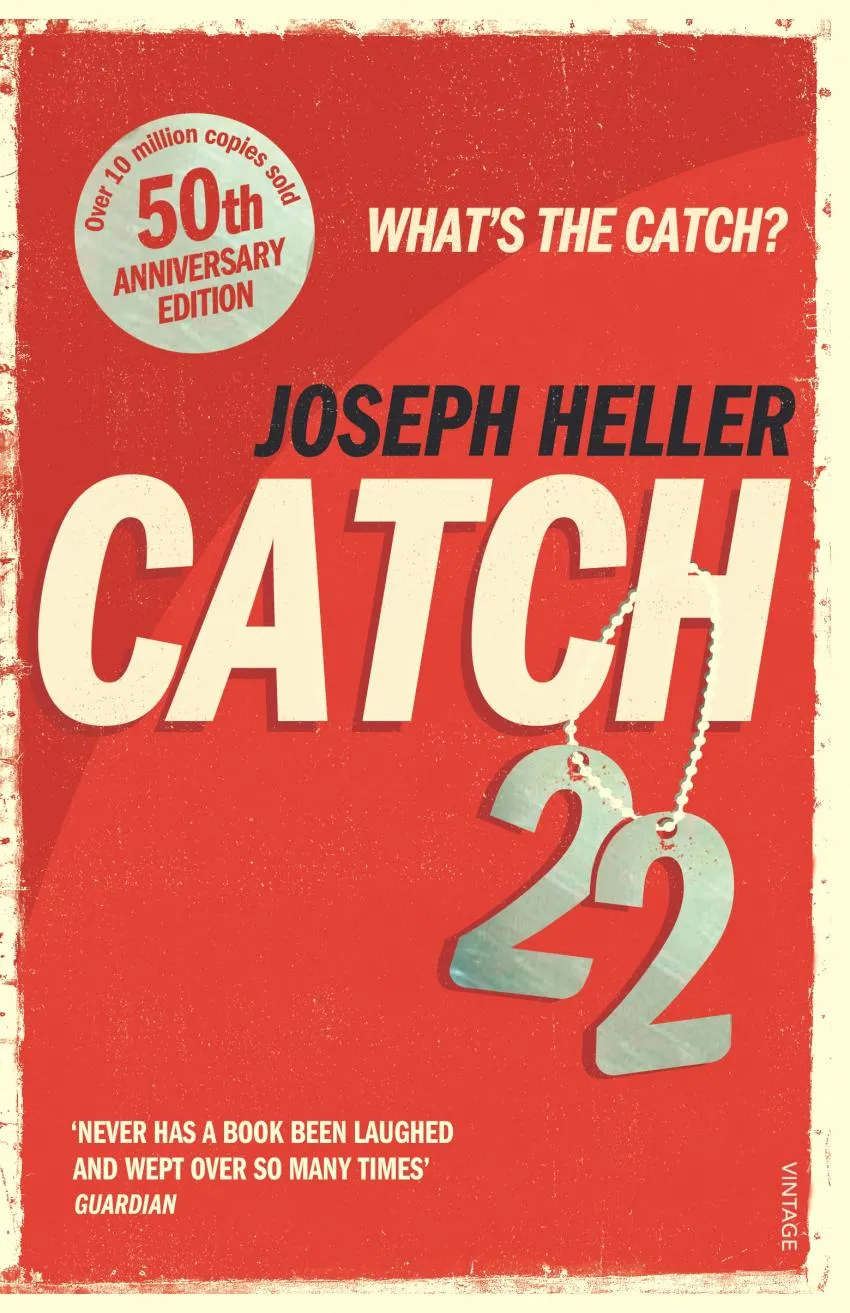
Understanding Postmodern Literature
While postmodern literature can be hard to pin down, it is important to note that not all books with this distinction carry all of the tenets listed above. The very nature of the postmodern novel, and indeed the prime trait listed above, is that it is inherently experimental.
We recently discussed the top 10 Great American Novels, and there will be some overlap in this list. Keep in mind, however, that the largely experimental and satirical nature of the books in this list keeps them separate from the more straightforward novels of the past. The postmodern novel is something that looks forward while commenting on the past.
On one hand, each successive postmodern novel seeks to be unrecognizable from the previous. This forces the author to commit to originality in an effort to stand out. On the other hand, influence from other authors is unavoidable. Whether it's unintentional or an homage to a previous work that the writer appreciates, almost all postmodern novels display interest in works of the past.
Indeed, the very diversity involved in creating a postmodern novel involves such a range that almost all novels in this category could be argued out of this one and placed into another quite easily.
With that in mind, if you are an avid reader of postmodern literature, you will know that not every tenet listed above will be included in any one work. Therefore, a novel may possess many or only a couple of the tenets listed above.
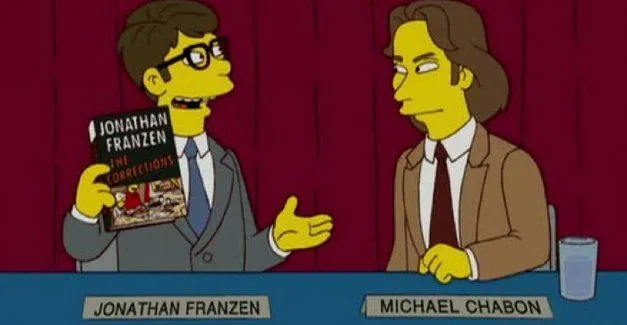
What is the Best Postmodern Book?
While some truly traditional postmodern novels such as Catch-22 by Joseph Heller or Slaughterhouse-Five by Kurt Vonnegut come in just before our chosen postmodern timeline, it is important to note that these famous books set the precedent for the latest postmodern novels.
Like many of the early great postmodern novels, I have chosen books that I consider to be examples of experimental originality. Each book stands out from the next, and that is the intended goal of a good piece of work in the postmodern world.
As mentioned before, great works like Truman Capote's In Cold Blood and William Gaddis' The Recognitions won't be included on this list, even though they are clearly postmodern. They should however be kept in mind while you scroll through this list and take a look at our more "modern" postmodern novels.
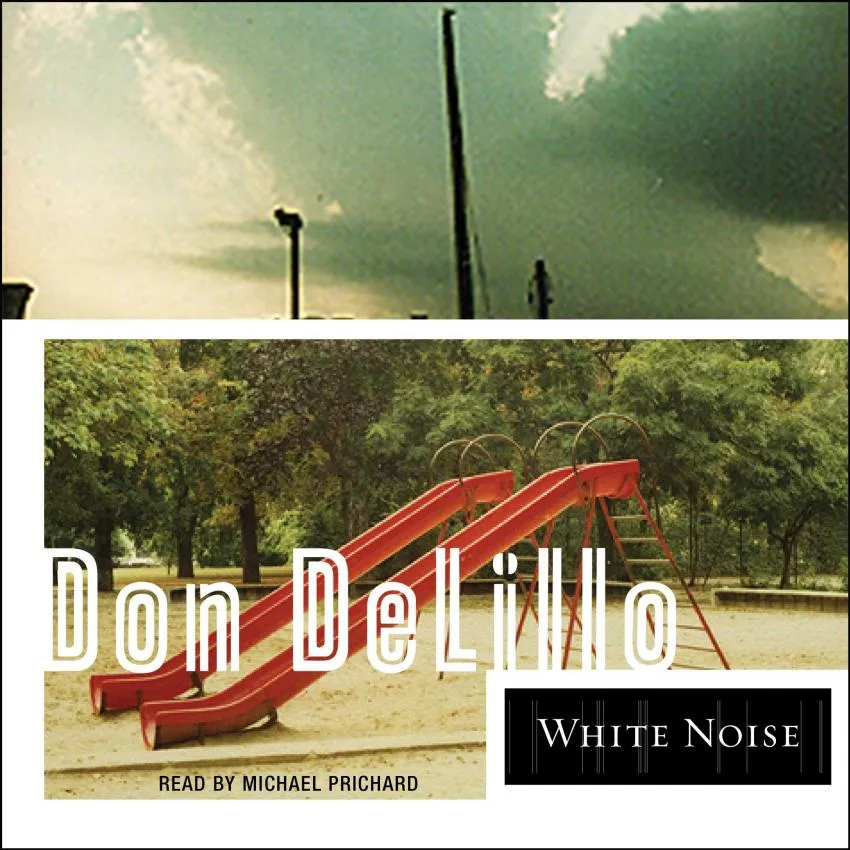
10. White Noise (1985), by Don DeLillo
Don DeLillo's eighth book, White Noise, was published in 1985. Using heavy satire to describe academia, also paints a vivid picture of the dangers pollution can do to the natural environment. In an interesting twist on modern climate change, DeLillo describes the effects the weather has on the characters of the novel, implying that pollution will not only be the death of the natural world but of civilization as we know it as well.
With this in mind, the book also focuses heavily on family. Jack Gladney is a well-known professor of "Hitler studies" though he has only recently started taking German lessons. We follow him through his absurd family life, which involves his divorce to four separate women, and his care for his brood of children and stepchildren.
There is also a heavy focus on death, as both Jack and his current wife Babette are extremely frightened of the big sleep, and often discuss which of them will die first. The mundane way in which they speak about the end of their lives tells us that they are largely bored and unfulfilled despite their busy academic lives.
The setting, the Midwest college town of Blacksmith, is a place that is oddly devoid of religion given its location in America's heartland. White Noise gives us a place in America in which American culture is the religion. One analyst said that "DeLillo creates a world in which the American culture is the primary religion. Jack Gladney experiences deep connections not with the aspects of typical religions, such as Jesus, God, and the church, but rather with normally trivial objects."
Indeed, White Noise speaks as much about consumer culture as any other book on this list, and this is also a common theme of postmodern literature. In the time period, we are discussing, it is no doubt a frequently touched upon topic. DeLillo's range of works is impressive, but it is the major themes of atheism, consumerism, satire, and Americana that speak loudest in his books.
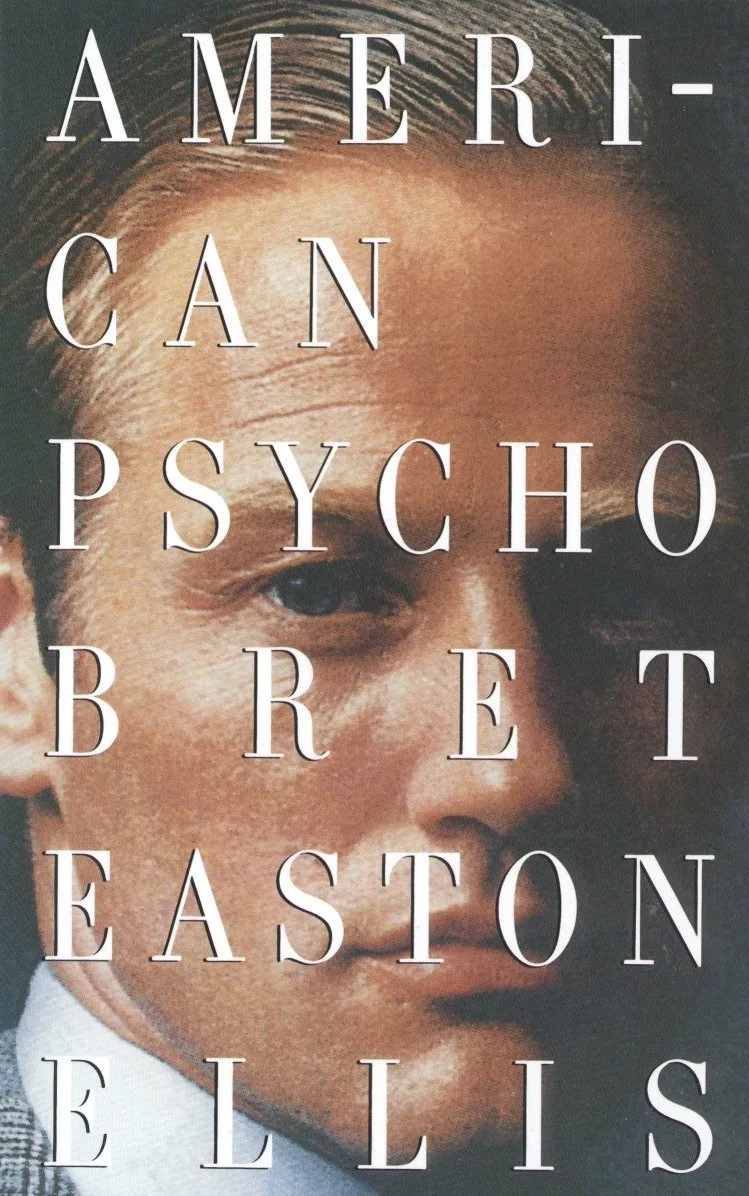
9. American Psycho (1991), by Bret Easton Ellis
Few novels are as well known as movies as this entry by Bret Easton Ellis. This study of 1980's cash culture, as well as mental illness and corporate America, is an amazing book, but this story is largely known by its big-screen counterpart, American Psycho, starring Christian Bale. In one of his first great roles, the story behind the film gave the legendary actor a ton to work with.
Bret Easton Ellis intended his book to shock and to break boundaries, but one thing he did not count on was its commercial and critical success. It is the first-person tale of an absurd life lived by Patrick Bateman, who escapes the boredom of office work by murdering prostitutes and fellow coworkers. Irvine Welsh of The Guardian called it "one of the greatest novels of our time" as well as "a brilliant depiction of the savage society we have created."
While many critics of the book disavowed it for its perceived misogyny, what Welsh is trying to say here is that the book was meant to be a critique of American corporatism as well as the disposable nature in which women are viewed. Ellis himself said "I was living like Patrick Bateman. I was slipping into a consumerist kind of void that was supposed to give me confidence and make me feel good about myself but just made me feel worse and worse and worse about myself. That is where the tension of American Psycho came from. It wasn't that I was going to make up this serial killer on Wall Street... it came from a much more personal place..."
After reading this quote, it is easy to understand that the book was as intensely personal to him as it was to the readers it resonated with. However, as mentioned by the man himself, the consumerist culture in which he lived and found himself lost is exactly what the book was critiquing, not glorifying.
Even though the movie was great and helped bring more readers to Ellis' story, its gaudy depiction of violence may have obscured the novel's intended message. Either way, this story is a cult classic, whether in book or movie form, and we encourage all interested parties to consult both pieces of work before trying to decipher its postmodern message.
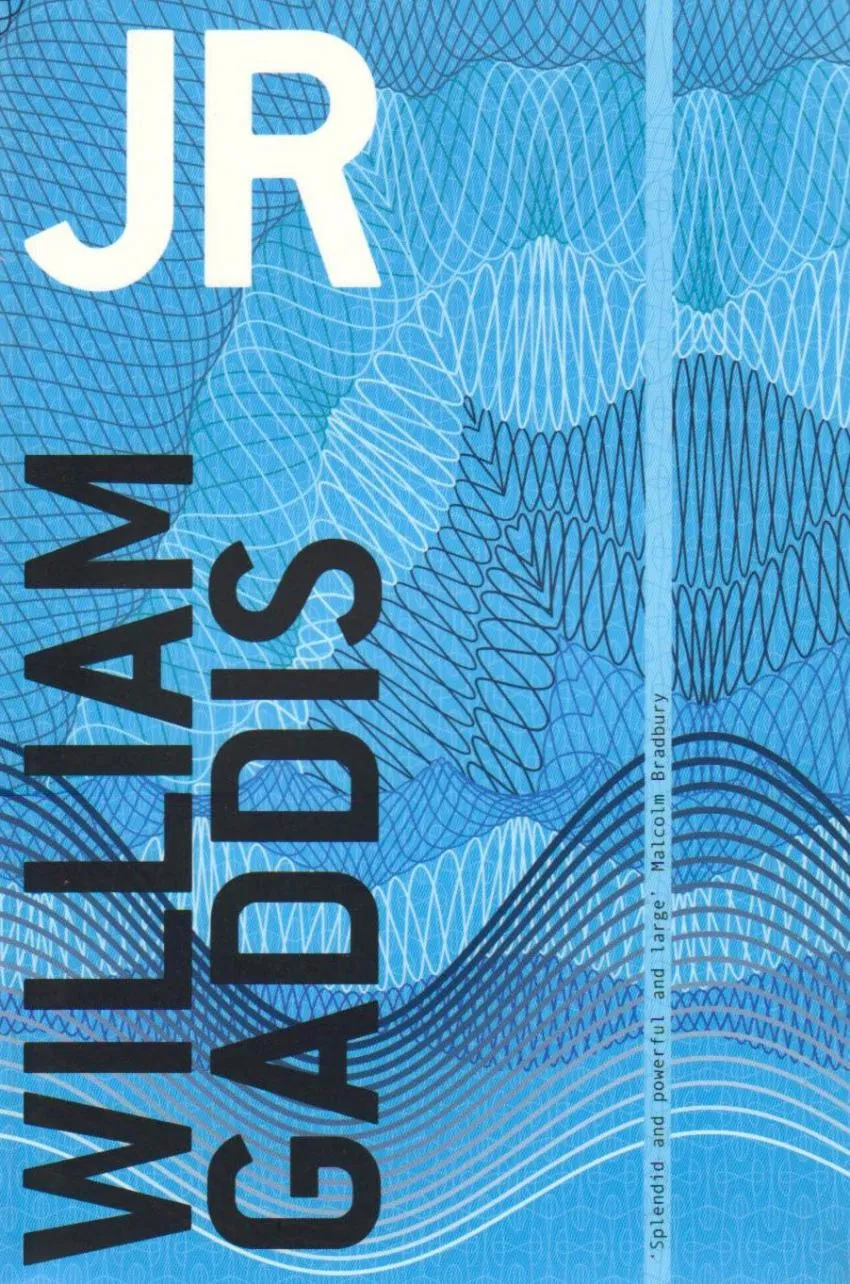
8. JR (1975), by William Gaddis
Sticking with the theme of capitalism and consumerist critiques, let us next discuss a book in which a more humorous tone is placed on the idea of American economic ideals. In William Gaddis' second novel, JR is just about as experimental as it gets. Taking a leap with the dialogue, the book has almost no time for exposition, and its disorienting conversations cause the reader to miss a lot no matter how much attention they pay it.
For this reason, it can be said that Gaddis' effort here was to confound the reader with the chaos that is the American Market. In our story, a young schoolboy named J.R. takes a field trip to a local stock exchange and has a big idea. He decides to invest in penny stocks, after being told that anyone can make it in America. He puts this to the test and eventually ends up with a massive conglomerate.
After this, the novel shows the decisions the young boy must make as the head of this corporation, allowing us insight into a CEO's mind as well as a child who is tasked with the same problems. Balancing moral conundrums such as laying workers off, selling large businesses, and making safe products, J.R. finds out that it's tough being number one.
Even though he is helped along by his ambitious music teacher and pianist, Mr. Bast, both must struggle together to discover the reckless side of ambition while in search of the American Dream. It won the National Book Award for Fiction in 1976, largely due to its darkly humorous and satirical take on the American Dream. One critic noted this calling it "the greatest satirical novel in American literature."
Indeed, few novels have earned their success in a more original way than Gaddis' second novel did. Gaddis tried to show us that capitalism can be so easy that a child can do it. But he also showed us that when confronted with the big decisions of life, it might be easier and more fulfilling to live a simpler life.
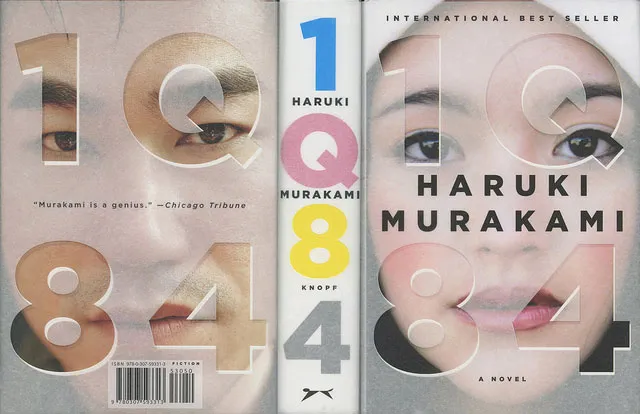
7. 1Q84 (2009), by Haruki Murakami
By the time Haruki Murakami released 1Q84, the writer was already a legend in both his home country of Japan as well as around the world. Using his extremely practiced focus on magical realism as well as historical culture references to jazz music, automobiles, and communist ideas, Murakami paints us a picture both beautiful and startling all at once. The book was released in three volumes, totaling nearly 1,000 pages.
Fans of Murakami were quick to praise the book, and critics of him joined soon after. After all, The New York Times Book Review said: "Murakami is like a magician who explains what he’s doing as he performs the trick and still makes you believe he has supernatural powers . . . But while anyone can tell a story that resembles a dream, it’s the rare artist, like this one, who can make us feel that we are dreaming it ourselves." This special place that Murakami offers us into his world is a once-in-a-lifetime ticket, and you'd be a fool not to join him on this ride.
Combining realistic fiction with fantastical creatures and occurrences allows Murakami to paint the strange and uncanny nature of this world we live in. He shows us that, to the naked eye, it requires a special level of attention to question our surroundings. With more and more people questioning if our modern life is a simulation, Murakami shows us what it might look like if that was indeed true.
The book follows Aomame, a self-proclaimed non-feminist, who is an expert in martial arts, as she dispatches and seeks revenge on men who have assaulted women. Parallel to this is the life of Tengo, a young writer who wishes to make a mark in this world, but struggles with his own work as well as his past. The two live their lives side by side in alternate timelines trying to find out something about each other while on the quest to discover themselves.
Above all, it is a visually stunning book, in the sense that it paints pictures that are realistic enough to live in for a long time. This is Murakami's bread and butter. With this in mind, if you are looking for a postmodern novel to escape into, one that forces your mind to reconsider your reality, then 1Q84 is the book for you.
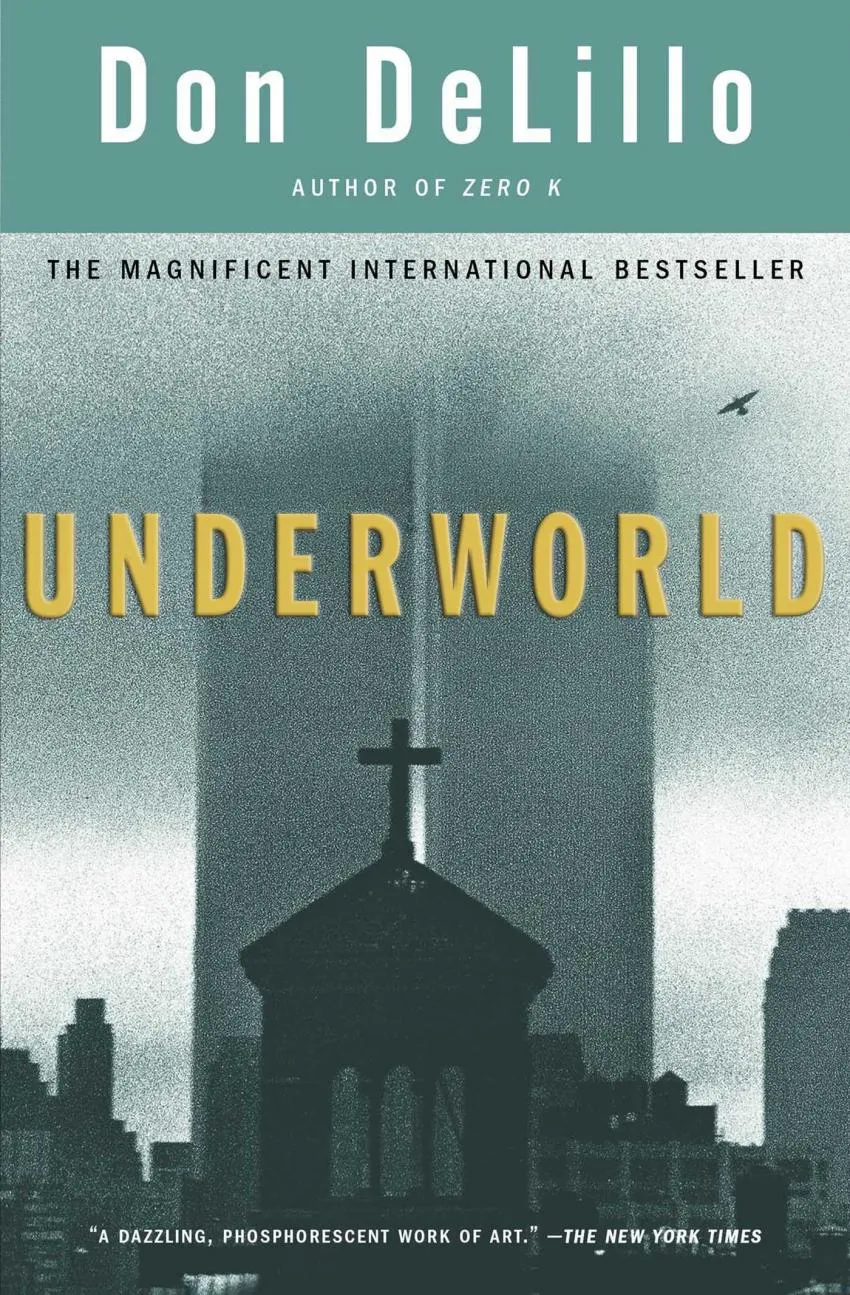
6. Underworld (1997), by Don DeLillo
DeLillo's second entry on this list is heavily influenced by David Foster Wallace's Infinite Jest. The use of an inanimate object to propel the story forward as well as the density and length of the book all harken back to Wallace. However, this is Don DeLillo's book, and his depiction of America in Underworld is unique to him.
In 2006, The New York Times ranked Underworld 2nd on its list of the best American fiction of the past 25 years, only behind Toni Morrison's Beloved. The work is as expansive as it is nostalgic, reaching its hand out to the 1950s as well as the early Cold War and the paranoia of America in the times of McCarthyism. Searching for meaning in the Atomic Age, DeLillo uses the title to show us what could become of us in our search for international dominance and superpower status.
The novel is about the act of searching, namely for a baseball which has its place in sports lore from a game in 1951, in which the New York Giants vanquished the Brooklyn Dodgers to win the pennant. This is known as "the shot heard 'round the world". The characters in the novel all search for this ball, and one man's life as he tries to find meaning in it.
This is the main character, Nick Shay, and we trace him and his family's history through major scientific events of the 20th century, including nuclear research in New Mexico, as well as the Fresh Kills Landfill in New York. All of these spectacles of waste come into contrast with the American Dream, as the characters try to find significance in their own lives as compared to the sudden death that awaits the world if nuclear research is allowed to prevail.
Indeed, the novel's quest for baseball is reminiscent of DFW's "entertainment" in Infinite Jest, and the pure length of this novel (827 pages) seems to be an homage to Wallace as well. After all, DeLillo was a friend of Wallace's and did give a eulogy at his funeral, so it safe to assume they shared insights as well as a deep friendship. Staying in line with DeLillo's typical deep dives into the natural world as well as the inner psychic world of his characters, Underworld is a gargantuan achievement that warrants multiple readings for complete understanding.
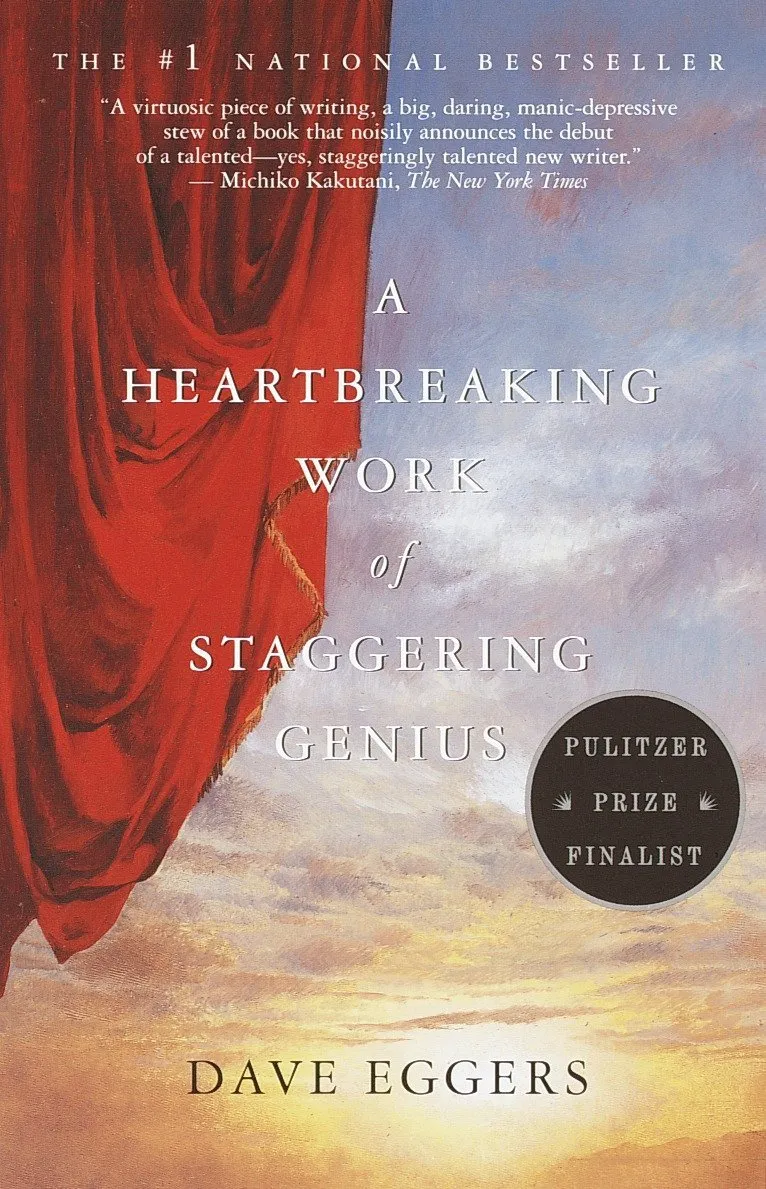
5. A Heartbreaking Work of Staggering Genius (2000), by Dave Eggers
In 2000, Dave Eggers released his memoir/novel A Heartbreaking Work of Staggering Genius to critical acclaim. The postmodern masterpiece was a finalist for the Pulitzer Prize in Fiction and was heralded by Time as "The best book of the year". In addition, they listed it as one of the All-Time Greatest Books from 1923-2011. While the book is technically nonfiction, it takes a conversational tone which allows readers to relate to it more as a story than anything else.
Indeed, it is a tragic work that speaks about the author losing both of his parents to cancer in the short period of a month, and then becoming responsible for taking care of his younger brother Christopher. Known as "Toph", his brother becomes his son, and Eggers must learn how to love and care for the best interest of his brother like a father would.
Eggers heavily uses the tenet of metafiction and allows his characters to break the fourth wall to acknowledge their experience inside of the book. Time is condensed from real life to form more cohesive narrative scenes. When the characters break from, Eggers uses them as experimental devices to speak on the larger ideas inside the book, such as tragedy, self-consciousness, self-doubt, and surrogate parenting.
In many ways, Eggers carved his own lane out with this book, and it is among the most experimentally ambitious on this list. As said before, it is largely nonfiction and is listed as such when given a genre, though there are both a preface and an addendum that can help the reader parse out what is real and what is literary fantasy.
After it was chosen as "the 12th best book of the decade" by The Times, it was given a new lease on life, and in the 2010's it has become widely studied and praised. While The New York Times described it as "big, daring [and] manic-depressive", they also said that it was a "postmodern collage" which blended genres to give us a story about the tragic nature of life as we know it.
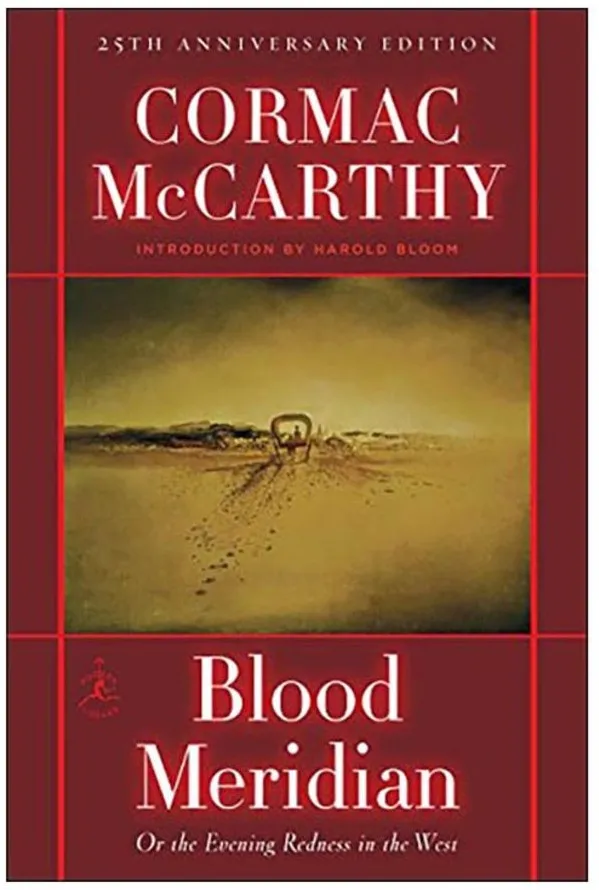
4. Blood Meridian (1985), by Cormac McCarthy
What many refer to as an "epic novel", Blood Meridian is widely described as McCarthy's best work, among a massive catalog of works that are well-known and successful. The extremely gruesome level of violence in Western America in post-civilized times is basically the theme of this novel. We are treated to battles between Apache warlords, American irregulars, and the armies of both the US and Mexico.
Centering on a time largely left out of American History books, the warring period of 1840-1855, in which Mexico and America struggled for supremacy of the southwest, Blood Meridian attempts to give us a realistic look into what the violence of the time really looked like. After reading this novel, there will be no illusions about war being glorious, you will understand the insatiable thirst for blood, the roaming and eager eye of disease, as well as the basically immoral nature of men in battle.
Although there exists an argument in these pages about what is right, and what can be expected in times of war, a large part of the novel also focuses on historical fiction. It attempts to speak of the Monroe Doctrine, and the decision of America to exclude Europe from colonizing America any further. This was the first step in making an American Empire, and McCarthy wants us to know the costs of such a decision.
It is an expansive work that follows our protagonist, known only as "the kid" as he tries to stay alive in a land intent on seeing him dead. The barbaric and archaic violence endured by the people in this book speaks to a larger political problem. What are the costs of conquest and what are the benefits? For the men on the ground, there seems to be little in the way of positive outcomes.
Most of the men in this story perish in unspeakable ways, and the overall idea is that war for conquest is an inherently bad thing. Still, McCarthy speaks to us in a way that harkens back to Hemingway. His sentences lack punctuation, include various dialects of the time, and distort the reader's mind to bring about the feeling of chaos that is being actively depicted in the pages of this postmodern masterpiece. Widely considered an essential postmodern novel, as well as an "anti-Western" novel, Blood Meridian is required reading for anyone wanting to understand postmodern literature.
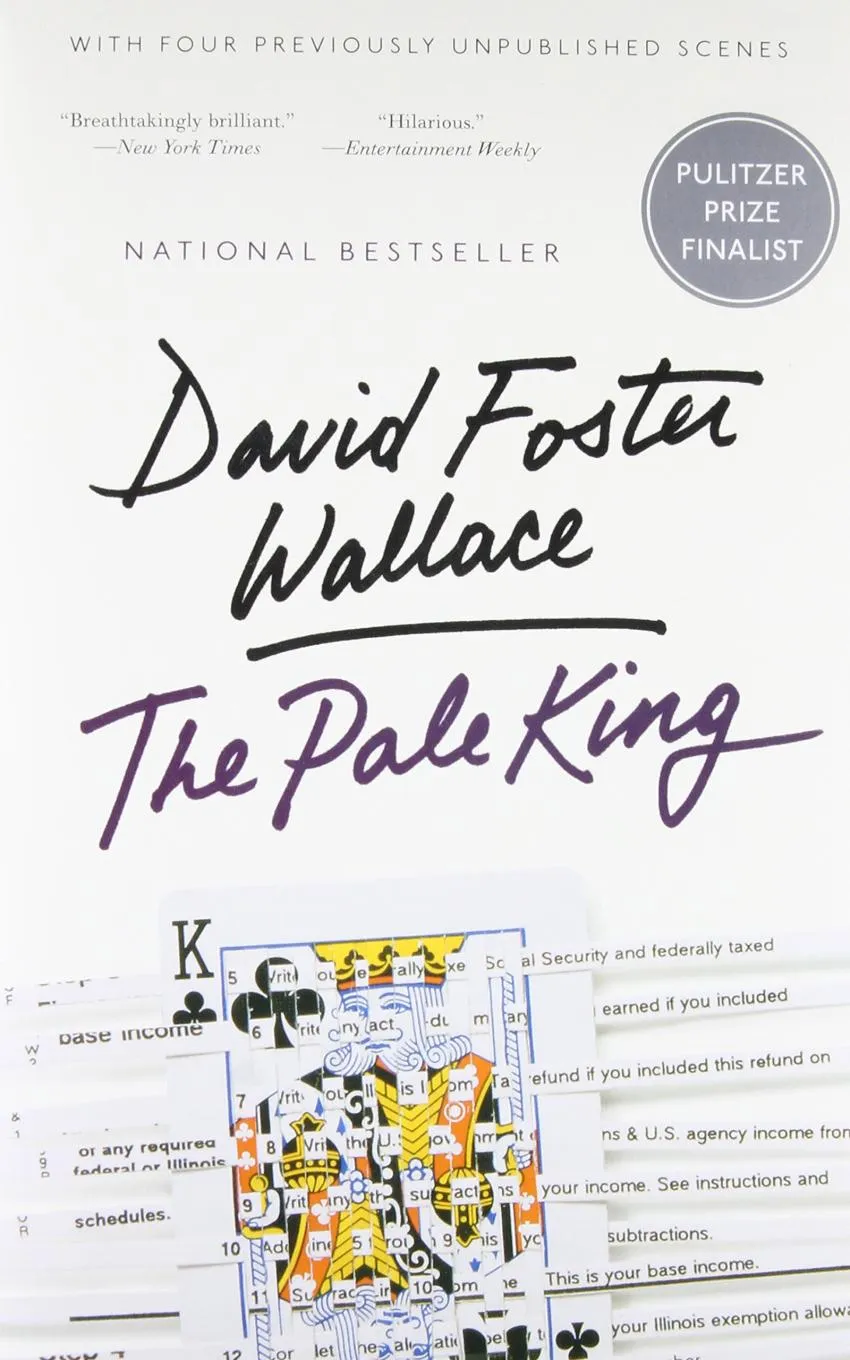
3. The Pale King (2011), by David Foster Wallace
This would not be a list of postmodern novels without the inclusion of David Foster Wallace. Although no Pulitzer Prize was awarded for Fiction in 2012, Wallace's first and only posthumous novel was one of three finalists. Obviously, DFW was not a stranger to success. His career took off in the late 1980s with the publishing of The Broom of the System.
After that, he had a steady output of great short stories and essays, but in 1996, he became world-renown with his own colossal magnum opus, Infinite Jest. This 1100-page book is so well known in the canon of postmodern literature that it would be a cliche to discuss it any further. Suffice to say that it brought Wallace fame and endeared him to the world as a literary genius. In addition to these trophies, he was given a MacArthur "Genius" Fellowship and became a respected teacher of creative writing at Pomona College as well as a stint at Amherst in Boston.
Perhaps the most interesting piece of work that Wallace ever created was a book that he never published. It only existed in a scattered manuscript form at the time of his death from suicide in 2008. A long-time sufferer of major depressive disorder, Wallace finally succumbed to his illness.
In his final novel, which was put together by his wife Karen Green, we are given another exemplary look into the absurd and boring world of the IRS. Highly dramatized, hysterical, and carrying all the trademarks of Wallace, the book was immediately successful and reminded the literary world what a giant it had lost in David Foster Wallace.
Writing for The Los Angeles Times, Richard Rayner described the themes of the book as "loneliness, depression and the ennui that is human life's agonized bedrock, 'the deeper type of pain that is always there, if only in an ambient low-level way, and which most of us spend nearly all of our time and energy trying to distract ourselves from' [quoting Wallace]... The Pale King dares to plunge readers deep into this Dantean hell of 'crushing boredom,' suggesting that something good may lie beyond."
It is hard to judge The Pale King as you would a traditional novel. It is largely unfinished, and to what extent Wallace intended it to exist in this form is virtually unknown. What it is, however, is a footnote to the career of a man who made footnotes famous, and a reminder of what true literary genius looks like in its ultimate form.
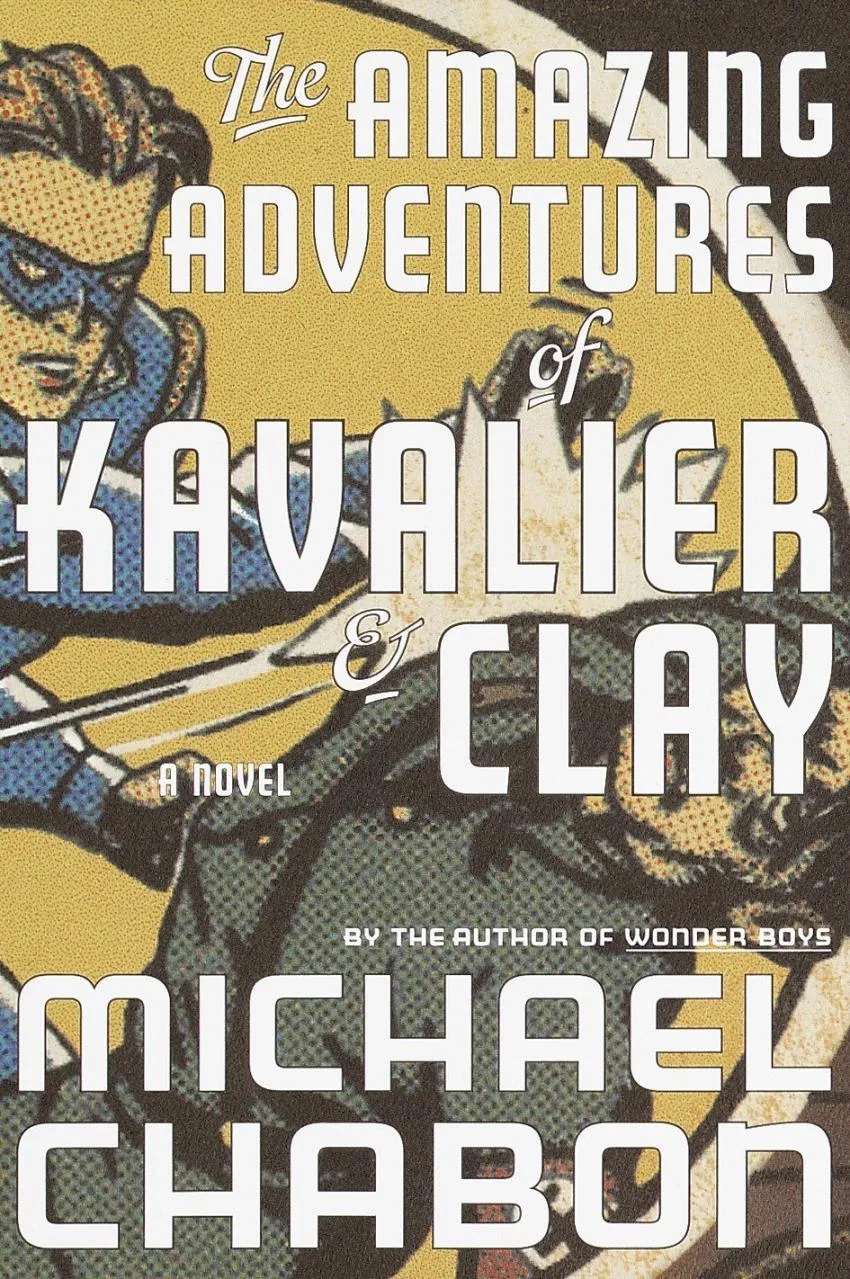
2. The Amazing Adventures of Kavalier & Clay (2000), by Michael Chabon
What many consider to be legendary author Michael Chabon's magnum opus, The Amazing Adventures of Kavalier & Clay made its mark by winning the Pulitzer Prize for Fiction in 2001. In fact, Bret Easton Ellis, acclaimed author of American Psycho, called Chabon's book one of the "three great books of my generation." Also in that group is The Corrections by Jonathan Franzen.
After reading this book, you will find that you have had the privilege of spending time in a world in which you wish you could never leave. Coming up on the Golden Age of comics beginning in 1938, the book also has a heavy focus on World War II. Choosing to focus on little-known theaters of the war, Chabon decides to include a dramatized military base in Antarctica.
Josef "Joe" Kavalier enlists to fight the Germans, himself a refugee from Hitler-dominated Prague. He encounters absurd and tragic circumstances and finds himself through all of it. His cousin Sammy Clay begins writing comics, while Joe illustrates them. Their teamwork and their fight against oppression bring them closer together.
On one hand, Chabon's research into the world of 20th-century comic books is extensive. Many real-life contemporaries of that era have their stories dramatized in the book including Jack Kirby and Stan Lee. This book came out prior to the superhero movie revolution of the last 10-15 years, and at the time it was a relatively undiscussed topic in modern literature.
On the other hand, Chabon deviates from the established history of the period and instead gives his own spin on 1930s and 1940s America. Chabon showcases the problems the young artists have to go through, both in their professional and private lives. As with all Chabon books, the descriptions are verbose and captivating. Even though he has had success after this, especially with 2012's Telegraph Avenue, it is The Amazing Adventures of Kavalier & Clay which stands as the quintessential Michael Chabon novel.
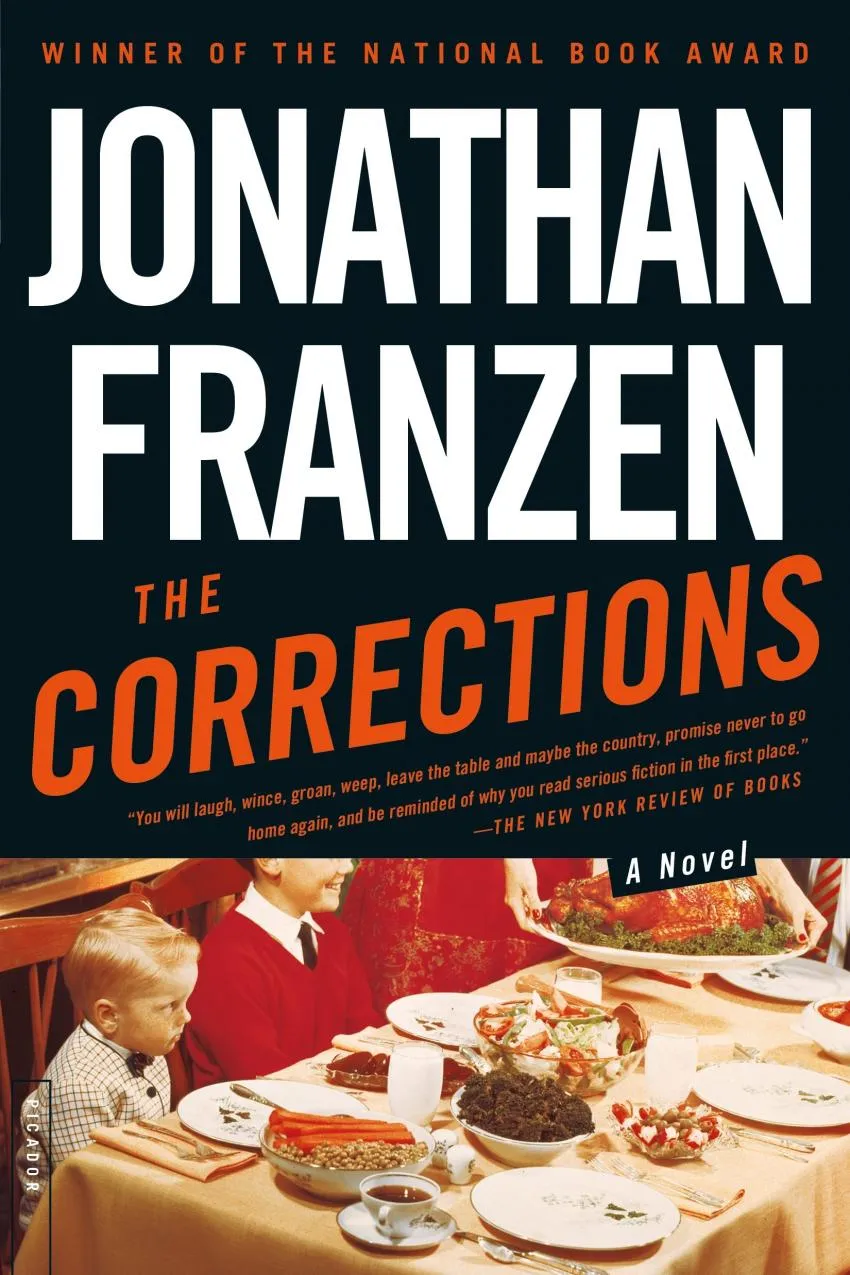
1. The Corrections (2001), by Jonathan Franzen
The two titles often associated with the battle for postmodern literary supremacy often include this book by Jonathan Franzen and our number two selection, Kavalier & Clay by Michael Chabon. The National Book Award winner for 2001, and what People Magazine referred to as "a spellbinding novel", The Corrections is a stark look at 1990's America. Unforgiving in its critique of capitalism, the internet, and ambition in general, this book is one of the 21st century's first to speak about the unique boredom that is so contagious in our modern times.
Although Franzen specifically wrote about family, the Midwest, and corporate America, the book is also a solemn tale about forgiveness. The Lambert family, the main focus of this book, has three children, each of which follows a separate path on their way to finding their own glory. Along the way, each of them attempts to discover themselves only to find that it might not be that important after all.
Indeed, The Corrections uses many of the features we discussed as tenets of postmodern literature. On one hand, it is a conventional postmodern book in the sense that it uses metafiction to discuss writer Chip Lambert's struggle with a screenplay. This is Franzen's insertion of himself into the novel. Satire and dark humor run rampant as well.
On the other hand, Franzen used an oddly specific point of view in this novel. His focus is primarily on the elder generation of Lamberts, Enid, and Alfred. They have lived through the Great Depression, and are now on the opposite side of economic hardships. From their perspective on the economic miracle that was the dot-com bubble, they are frightened at the prospect of change.
Although this forces the reader to consider the expansive worldview of someone who has lived through multiple generations, it also asks the reader an interesting question: Can you ever really understand a time other than the one you were born in? All of our characters here struggle with finding themselves and adjusting to the times, but one thing is for sure: The Corrections will stand the test of time and always live as the definitive account of late 20th century America.
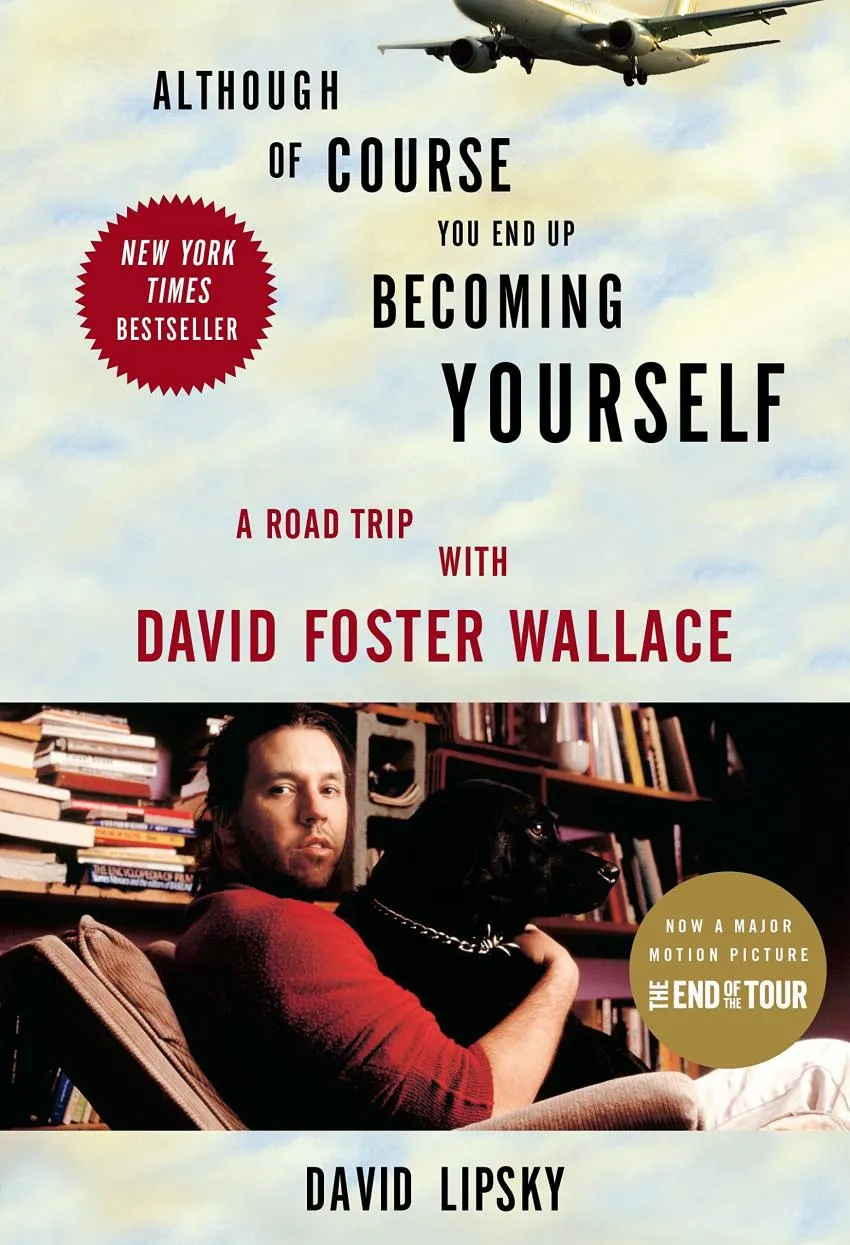
Postmodern Literature and the Future
Many of the authors listed still write today. We recently did an article outlining Jonathan Franzen's next novel, Crossroads, which we hope you will check out. DeLillo has stayed busy as well, and his 2020 novel The Silence has earned rave reviews for its criticism of technology as well as cellphones.
Dave Eggers has a novel scheduled for release in late 2021, called The Every. Obviously, there will be no further original work from dearly departed David Foster Wallace, but there are several nonfiction works about his life if you are interested.
Written by journalist and author David Lipsky, Although Of Course You End Up Becoming Yourself, (subtitled "A Road Trip With David Foster Wallace"), is a nonfiction account and interview with the famous author. It served as the basis for the 2016 film The End of the Tour, starring Jason Segel as Foster Wallace and Jesse Eisenberg as David Lipsky.
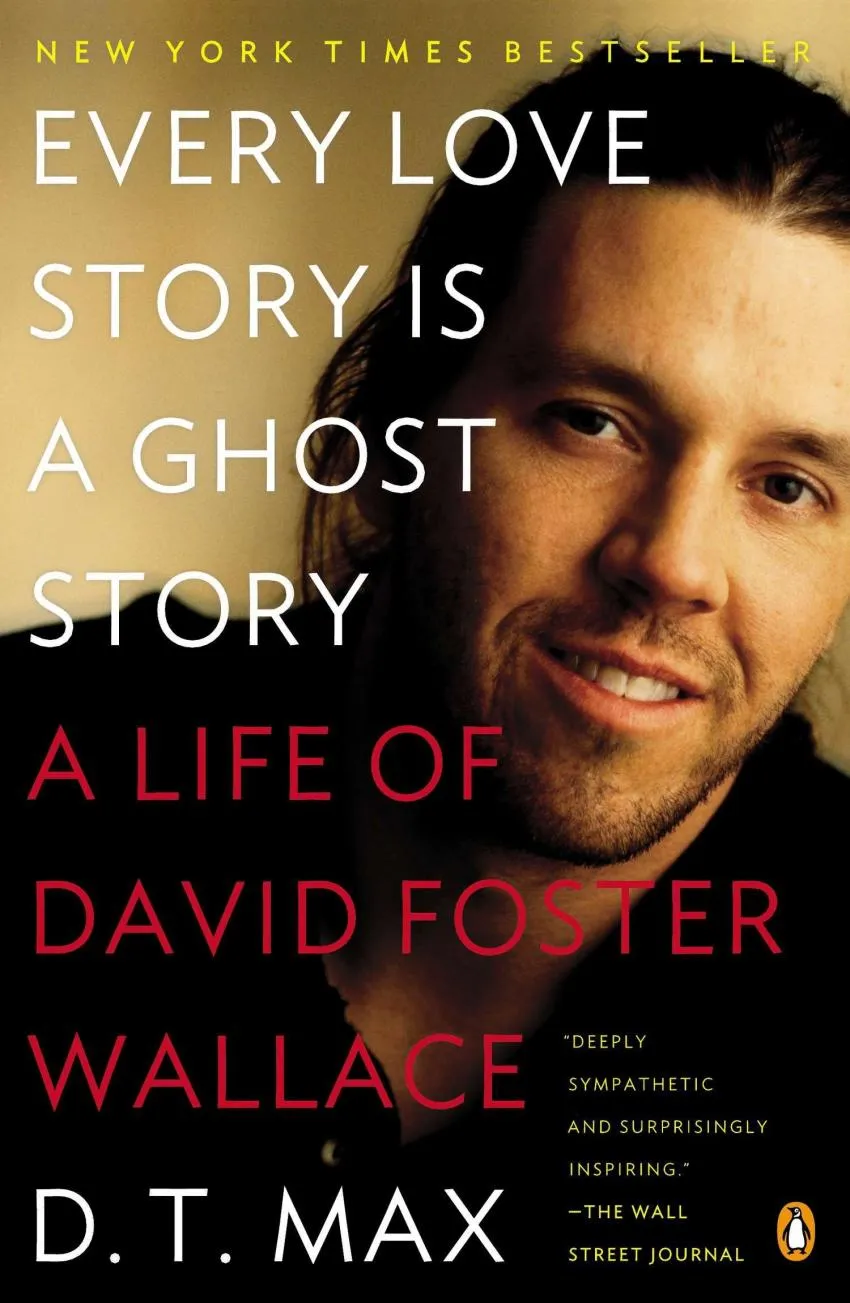
In addition, D.T. Max has written an excellent autobiography on the legendary literary figure, Every Love Story is a Ghost Story, discussing the problematic nature of trying to place a flawed human on a pedestal. It is gripping, and at times, disturbing, but it is also the definitive unflinching account of the man's life.
If you haven't had your fill of postmodern literature yet, then feel free to check out the video below and watch Jonathan Franzen and Don DeLillo discuss their works as well as postmodern literature at large.
Opinions and Perspectives
I absolutely love how postmodern literature challenges conventional storytelling. The way White Noise tackles consumer culture and environmental anxiety feels more relevant than ever.
DeLillo's ability to weave academic satire with existential dread is masterful. The scenes about Jack teaching Hitler studies while not knowing German are darkly hilarious.
I struggled getting through Infinite Jest honestly. The footnotes and narrative complexity felt overwhelming. Am I missing something?
Actually the footnotes are part of what makes it brilliant. They mirror the fractured way we process information in modern life. Try viewing them as parallel narratives rather than interruptions.
Blood Meridian haunted me for weeks after reading it. McCarthy's brutal prose and unflinching violence serve a deeper purpose in examining human nature.
Personally I found American Psycho too gratuitous. The satire gets lost in the shock value.
Interesting perspective, but I think the extremity is precisely the point. Ellis was highlighting the violence inherent in 80s corporate culture and masculinity.
The Corrections really captures the generational divides in American families. Each character feels so real in their flaws and struggles.
Just finished 1Q84 and I'm still trying to process it. Murakami has such a unique way of blending reality and surrealism.
The parallel narratives in 1Q84 remind me a bit of Cloud Atlas. Both explore how stories echo across time.
Anyone else find it interesting how many of these books deal with technology and media? Seems especially prophetic now.
The experimental style of JR feels like it predicted our current information overload. All those overlapping conversations and chaos.
I find it fascinating how unreliable narrators became such a key feature of postmodern literature. Really makes you question perspective.
The way Eggers blends memoir and fiction in Heartbreaking Work is incredible. He manages to be both deeply personal and universal.
I think we're seeing postmodern influence in a lot of contemporary literature now. The line between genres keeps getting blurrier.
That's what excites me about postmodern literature - it refuses to be contained by traditional boundaries or expectations.
The satire in White Noise hits differently post-pandemic. That airborne toxic event section especially.
I love how many of these works explore American identity and capitalism. Still such relevant themes today.
Reading Pale King made me appreciate the artistry in writing about boredom. Wallace turned tedium into something profound.
Does anyone else see connections between Blood Meridian and contemporary political violence? The themes feel very current.
The way these authors play with time and structure really challenges how we think about narrative.
I appreciate how postmodern literature acknowledges its own artificiality. The meta aspects make you think differently about storytelling.
Kavalier & Clay perfectly captures the golden age of comics while telling such a human story. Chabon's research really shows.


